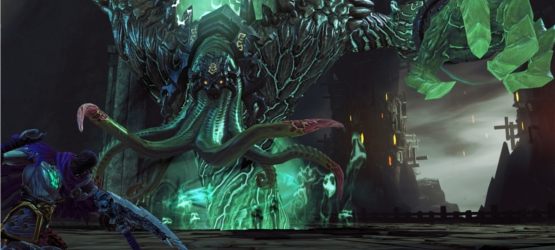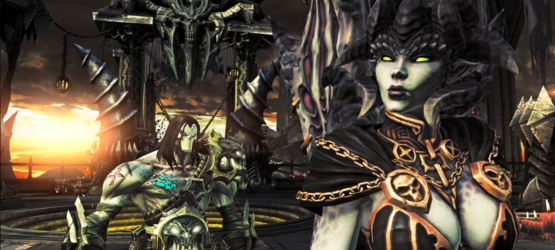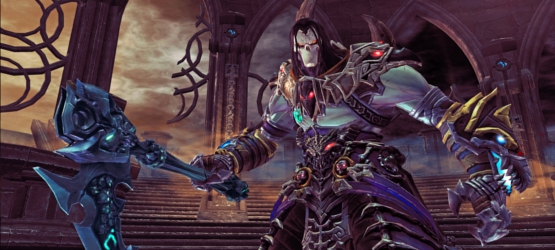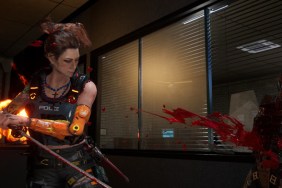Darksiders was released to favorable critical reviews and eventually went on to sell very well, but was criticized for being too derivative of Nintendo’s Legend of Zelda franchise. Personally, while I thought that this comparison was apt, I didn’t count this as a negative, and thought that Vigil Game’s attempt at making an original adventure game was a mature themed Zelda, a series that Nintendo will never risk making out of fear of losing their core audience. In Darksiders II, Vigil Games has refined many of the elements that made the first so great while also meaningfully adding to the experience for the sequel. These changes allow Darksiders II to really come into its own and create an experience that is as much of a blast to play as it probably was to build.
The team at Vigil has created worlds that are enormous in scale. For those that haven’t played the first game (and you really should!), Darksiders II doesn’t resolve the story of War. In fact, you don’t have to have played the first title to make sense of the second. Instead, the parallel narrative follows Death as he embarks on a quest to clear War’s name. This change in focus for the story is a risky move, but it’s one that pays off in terms of character development. Throughout the course of events we learn more about the Horsemen and the fate of their kin, the Nephilim. Unlike War, we are also given a much better impression of Death’s emotional state throughout the course of the story.
But in order to see all that the 25 hour long story has to offer, you’ll have to engage in some traversal acrobatics and combat. Death, as opposed to War, eschews any type of block mechanics in favor of a purely offensive strategy. Moving from enemy to enemy is seamless and allows the player to string together wicked combos with Death’s dual scythes and his secondary weapons. Changing from one weapon to another is simple and there’s a lock on system for focusing on larger targets. However, switching between targets while locked on can make things confusing in larger, more frenetic battles as it’s easy to switch to the wrong target or lose track of the main threat. Moreover, there are times where the framerate will dip when lots of enemies are present at once. The circle button executions from the first game also return, but this time they won’t always trigger. There’s actually a separate stat that governs your chances of getting an execution prompt. These moments are gory as one would expect, but can help to thin down a crowd of bad guys quickly.

Also new this time around is the leveling system. As Death kills enemies or completes quests he gains XP. With each level come skill points that can be distributed into the various abilities to give Death access to new special moves, or make exisiting ones more powerful. One of my favorites is an ability called Exhume where Death summons 3 ghouls to help him fight. This can later be buffed with further skills that cause the enemies to preferentially target the ghouls instead of Death or cause the ghouls to explode once the spell ends. The abilities are split into two trees with the Harbinger tree being more of a physical combat tree while the Necromancer tree is more geared for spell casting. Also for a very small fee players can respec themselves at anytime allowing freedom to experiment.
This same approach to the combat also works its way into the traversal. Wall running, mounting, and wall bouncing have all been added in. The Deathgrip item obtained in the latter half of the first world also allows Death to grab distant objects for use as grapple points for traversal. But there are times, particularly around edges, where even the act of jumping can be a bit weird due to some button latency or edge effect issues. These can cause Death to just fall into a bottomless pit or into lava during some dungeons. Fortunately, the saving grace is that fall penalties are small, and this doesn’t happen often. Overall, the traversal mechanics and the combat feel speedy, and yet tightly controlled in keeping with the theme of being the Pale Rider.

The puzzles often make the player utilize more than one of Death’s gadgets to get through them. One puzzle in particular within the demon realm had me using the Voidwalker, the Darksiders version of the Portal Gun, and a new ability called Soul Splitter. The Soul Splitter is particularly interesting in that it allows Death to turn his physical body into stone while his soul splits into two versions that can be switched between. Have two pressure plates in a room that need to be pressed simultaneously to open something? No problem! Just split Death’s soul and press both switches simultaneously to move on. As a result, the puzzle design in Darksiders II can get complex, but never so hard as to be impossible to solve.
There’s also lots of loot within the game which can be equipped to allow the player to tailor themselves to any situation or play style. As an example, Death’s primary scythes initially start out with no special attributes other than basic damage. Later, more powerful primary weapons can be obtained that can boost critical hit rates or damage, add elemental damage that can act over time, or even leech life from opponents. Several secondary weapon types are also present to suit to different play styles. Lastly, special possessed weapons in the game can be fed other weapons in order to level them up and gain abilities. So, say you have a pair of possessed scythes that you feed a pair of other lower level scythes, if the low level scythes have an ability like increase in critical hit rates, then when the weapon levels up the player will have the choice of being able to add that stat to the weapon to increase its powers. As a result vendor trash and outdated equipment can be used for possessed weapons or sold to an NPC merchant for gold. Indeed, the variety within the loot coupled to the intuitive interface help to make experimentation an easy process within any context.

Speaking of NPCs, there are also numerous side quests within the game. In one called the Crucible, players can fight up to 100 waves of enemies for special rewards and loot drops. It’s a fun and challenging addition to the franchise and gives further reason to do some of the sidequests for more skill points or additional levels to help in surviving all the waves. An online leaderboard system also tracks various stats such as your fastest game completion time or highest combo. Finally, the Serpent Tomes allow for items to be passed from one player to another in a manner very similar to emails.
Frankly, there is more that I could say regarding Darksiders II, but I don’t want to spoil it for anyone nor do I want to stifle people’s curiosity. Indeed, that’s what Darksiders II is all about, exploration and an epic quest. I also applaud the team at Vigil Games for taking the risks that it did with the focus of this title and the scale to which it is built. Prior to the game’s release, Joe Mad told me that not resolving the story of War was a ‘ballsy move‘ by the team at Vigil especially since they didn’t know at the time if there would be a sequel to the game. While those sorts of risks don’t always work, Vigil Game’s moxie and dedication pay off huge in Darksiders II, and I can’t wait to see what more lies in store for the Four Horsemen of the Apocalypse.
-
The scale of the battles and worlds make Death's quest feel epic.
-
The leveling system, skill trees, and loot equipping integrate seamlessly for player customization.Â
-
Combat and traversal feel fast and fluid.
-
Dodging in cramped levels can be tough.
-
Button press detection issues around edges when trying to jump at times.
-
Minor framerate dipping during fights with several enemies on screen.





